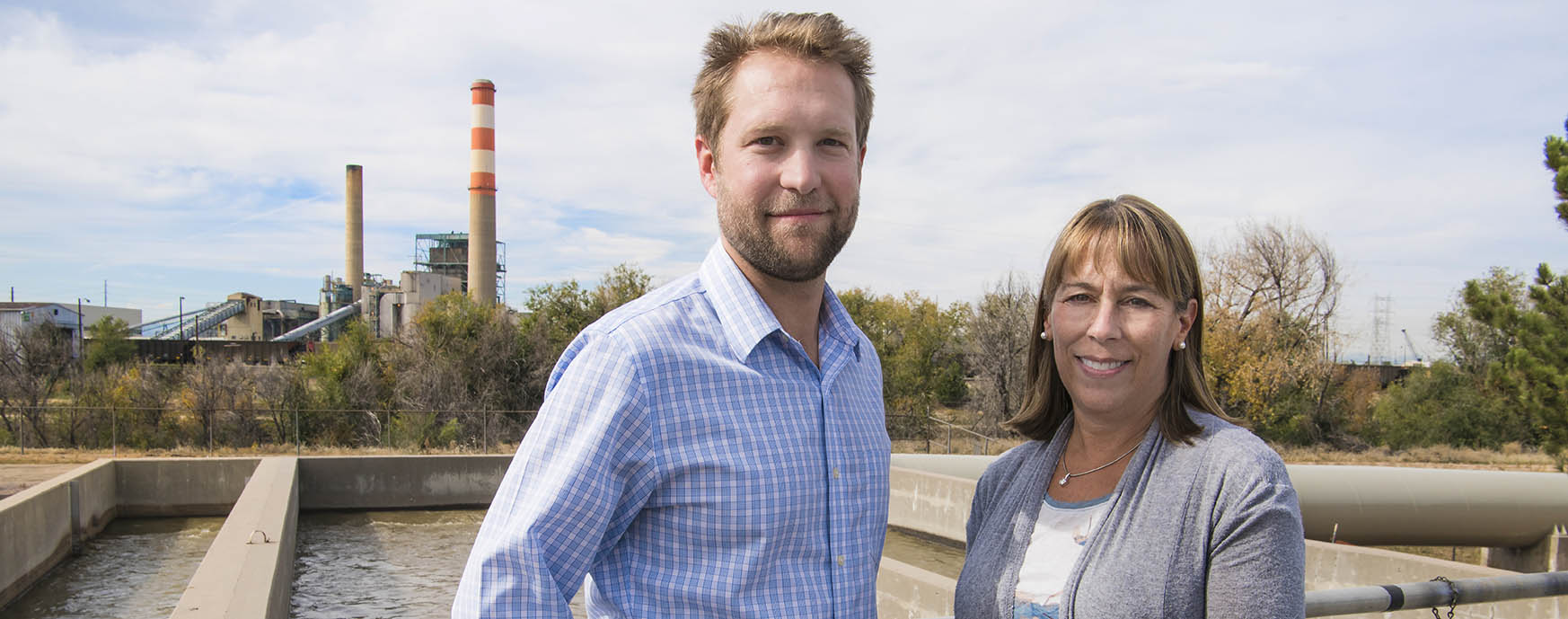Can Climate, Water Resource Changes Impact U.S. Power Supply?
Power plants that require water for cooling provide 85% of U.S. electricity generation. For optimal operations, these facilities need large volumes of water at sufficiently cool temperatures. But projected climate conditions indicate that the availability and temperature of water could lower potential power output and affect power system reliability.

NREL scientist Jordan Macknick and Associate Laboratory Director for Energy Analysis and Decision Support Robin Newmark in front of the Cherokee Power Plant. They are part of the team evaluating the potential impact of climate change on power plant output. Photo by Dennis Schroeder, NREL 48621
In the most comprehensive study of its kind, Researchers from NREL, City College of New York, and Sandia National Laboratories evaluated the individual performance of 1,080 U.S. thermoelectric plants under possible future climates from 2035–2064, as well as their collective performance within power grid sub-regions.
Studying engineering interactions with climate, hydrology, and environmental regulations revealed the region-specific nature of energy-system performance under climate conditions and the need for region-specific strategies concerning energy security and climate/water adaptation.
Individual plants face climate/water constraints. However, the current power-supply infrastructure has the potential to adapt to future climates by capitalizing on the size of regional power systems, how the grid is configured, and improved thermal efficiencies from newer technologies that require less water.
It is imperative for reliability assessments to reflect the highly region-specific performance of electricity generation. They should also incorporate multiple climate/water and required power-output scenarios to identify reliability “tipping points.”
This approach can help test the feasibility of energy-system expansions and improve planning decisions by considering both national and region-specific strategies required to achieve and maintain energy security, climate/water and environmental resilience, and electricity generation reliability.
To learn more, read the full Nature Climate Change paper.
Last Updated May 28, 2025
